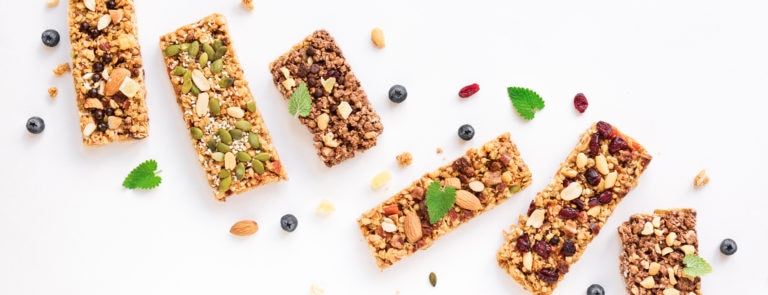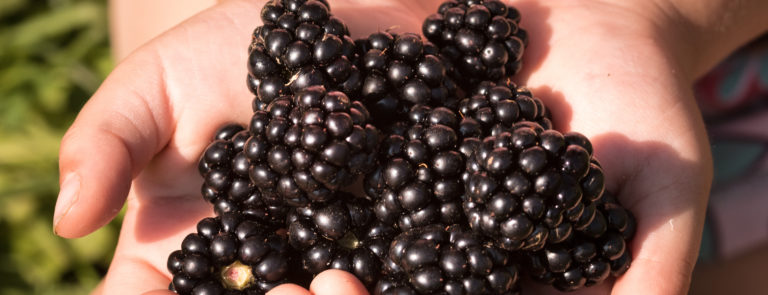15% off €25
Code:DEAL
The difference between healthy fats & bad fats

What are healthy fats & why are they healthy? And why should you eat them over bad fats? Discover the difference between good & bad fats in this article.
Summary
1What do we mean by fat?
Most food contains some form of dietary fat. It’s important to keep a close eye on our dietary fat intake because it can impact our cholesterol levels
2What are the 3 types of healthy fats?
Monounsaturated and polyunsaturated fats are considered as being healthy fats because they are good for your heart, cholesterol and health overall...
3What are examples of healthy fats?
That’s a very good question, because if you want to reduce how many bad fats are in your diet by replacing them with good fats...
Let’s spend a few minutes focusing on a topic that you most probably don’t often find yourself chatting about, unless you’re with your GP and are possibly talking about your diet or cholesterol levels.
Most, if not all, food contains some form of fat. Some food contains more fat than others too. While most of us know that we need less of the bad fats and more of the good to help us stay healthy, not everybody automatically knows which food contains good fats and which food contains bad fats.
This article is designed to guide you through the world of good and bad fats; where to find them and why we need them. We’ll also provide you with some practical dietary fat sources too. Once you’ve reached the end, you should hopefully feel fully informed about fat, and even potentially realise that not all fats are actually bad…
What do we mean by fat?
Most food contains some form of dietary fat. It’s important to keep a close eye on our dietary fat intake because it can impact our cholesterol levels.1
Cholesterol is a fatty, wax-like substance that our bodies need in order to function properly. However, if your cholesterol levels become too high, it can be bad for your health. There are several reasons for this - high cholesterol can increase your risk of heart and circulatory diseases, such as heart attack, stroke and vascular dementia.2
If you want to reduce your cholesterol, you need to focus on swapping the bad fats in your diet with good fats.
.png)
And in order to do that, it’s important you know a bit more about dietary fat and what good and bad fats look like. Generally speaking, fat falls into one of these three main categories:3
- saturated fats
- unsaturated fats
- trans fats
These are found in sweet and savoury food. They tend to come from animal sources, including meat and dairy products, as well as some plant foods, such as palm oil and coconut oil.
According to the NHS, most people in the UK eat too much of this type of fat. The Government recommends that:4
- Men should not eat more than 30g of saturated fat a day.
- Women should not eat more than 20g of saturated fat a day.
- Children (aged 1 to 3) should limit saturated fat to 30 to 40% of their daily calories. For 4 to 18-year-olds, fat consumption should make up no more than 25 to 35% of their daily calorie intake.5
While there’s no need to completely cut out all saturated fat from your diet, most nutrition experts do recommend limiting it so that it makes up just 10% of your overall daily calorie intake.6
Tend to be found in oils that come from plants and fish, and are either monounsaturated or polyunsaturated fats.
- Monounsaturated fats - help protect your heart by maintaining levels of ‘good’ High-Density Lipoprotein (HDL) cholesterol while reducing levels of ‘bad’ Low-Density Lipoprotein (LDL) cholesterol in your blood.
- Polyunsaturated fats - can also help reduce ‘bad’ LDL blood cholesterol levels. They can be categorised even further, as either Omega-3 or Omega-6. Certain types of Omega-3 and Omega-6 fats can’t be made by the body, so it’s important your diet includes them. All healthy diets contain some form of Omega-3 every day.7
Are naturally present in small amounts in certain food, such as meat and dairy products. They can be also found in partially hydrogenated vegetable oil. They are the worst type of dietary fat.8
Just like saturated fats, trans fats can increase cholesterol levels in the blood. They are a by-product of a process called hydrogenation that’s used to turn healthy oils into solids and prevent them from becoming rancid.
Trans fats have no known health benefits whatsoever and there is no safe level of consumption.
Trans fats can also create inflammation, which is linked to heart disease, stroke. Even small amounts of regular consumption of trans fats can be bad for our health – for every 2% of calories from trans fats that are consumed daily, the risk of heart disease rises by 23%.9
What’s more, it really does pay to read the labels carefully when it comes to trans fats. If the label says ‘partially hydrogenated oils, it’s a sign a product contains trans fats.10
Summary
Most food contains some form of fat, either saturated, unsaturated fats or trans fats. Saturated and trans fats are ‘bad’ fats and unsaturated fats are ‘good fats.’ Bad fats can contribute to weight gain and cause health issues, such as heart disease. Ideally, we need to eat more good fats and less bad fats if we want to lead a healthier life.
What are the 3 types of healthy fats?
Good fats 1 & 2: Monounsaturated and polyunsaturated fats
Monounsaturated and polyunsaturated fats are considered as being healthy fats because they are good for your heart, cholesterol and health overall.
These two fats are good for our health because they can help reduce:11
- The risk of developing heart disease or having a stroke
- Bad LDL cholesterol levels, while increasing good HDL
- Triglycerides (a type of fat) associated with heart disease
- Blood pressure
- Your appetite levels by filling you up and making you feel fuller for longer
Good fats 3: Omega-3 fatty acids
There are different types of Omega-3s, Eicosapentaenoic Acid (EPA) and Docosahexaenoic Acid (DHA) are found in fish and algae and have the most health benefits, while ALA comes from plants and is a less potent form of Omega-3, although the body does convert ALA to EPA and DHA at low rates.12
Meeting the recommended intake levels of Omega-3 is good for our health because it helps:
- Contribute to maintenance of normal brain function
- The maintenance of normal blood cholesterol levels and normal blood triglyceride levels
- The normal function of the heart
- The maintenance of normal blood pressure
- Helps support a healthy pregnancy
Summary
There are three different types of healthy fats. They are monounsaturated and polyunsaturated fats and Omega-3 fatty acids and Omega-6. They can benefit our health in so many ways, from contributing to normal blood cholesterol levels, to supporting your brain function.
What are examples of healthy fats?
That’s a very good question, because if you want to reduce how many bad fats are in your diet by replacing them with good fats, then it’s important you know where to find the good fat foods.
30+ examples of healthy fat foods
- Olive, canola, peanut, and sesame oils.
- Avocados.
- Olives.
- Nuts (almonds, peanuts, macadamia, hazelnuts, pecans, cashews).
- Peanut butters.13
- Sunflower, sesame and pumpkin seeds.
- Flaxseed.
- Walnuts.
- Fatty fish (salmon, tuna, mackerel, herring, trout, sardines) and fish oil.
- Soybean and safflower oil.
- Soy milk.
Tofu.14
- Anchovies.
- Herring.
- Salmon.
- Mackerel.
- Sardines.
- Trout.
- Tuna.
- Mussels.
- Oysters.
- Halibut.15
- Eggs (small amounts of DHA).
- Flaxseeds and flaxseed oil.
- Chia seeds.
- Canola and soybean oil.
- Walnuts.
- Edamame.
- Beans (refried, kidney, etc.)
- Brussels sprouts.
- Kale.
- Spinach.16
- Rapeseed oil.
- Corn oil.
- Sunflower oil.
- Canola oil.
- Safflower oil.17,18
What are examples of unhealthy fats?
‘Bad’ fats are unhealthy because of their ability to increase Low-Density Lipoprotein (LDL) cholesterol levels.19
- Fatty cuts of meat.
- Meat products, including sausages and pies.
- Butter, ghee, and lard.
- Cheese, especially hard cheese, such as Cheddar.
- Cream, soured cream and ice cream.
- Some savoury snacks, like cheese crackers and some popcorns.
- Chocolate confectionery.
- Biscuits, cakes, and pastries.
- Palm oil.
- Coconut oil and coconut cream.20
- Commercially-baked pastries, cookies, doughnuts, muffins, cakes, pizza dough.
- Packaged snack foods (crackers, microwave popcorn, chips).
- Block margarine.
- Fried foods (French fries, fried chicken, chicken nuggets, breaded fish).
- Anything containing hydrogenated or partially hydrogenated vegetable oil.21
One of the main, tell-tale signs that food contains saturated fats is if they are solid at room temperature. It’s one of the reasons why they can also be referred to as ‘solid fats.’22
Summary
There are just as many good fat foods as there are bad fat foods. And once you know those good fats, it’ll be much easier to incorporate them into your diet for a healthier lifestyle.
What’s the healthiest fat?
So, we’ve established that the good fats are - monounsaturated and polyunsaturated fats, which can be Omega 3 & 6.
But what’s the healthiest fat to cook with? Interestingly, fatty acids can start to break down when they’re heated and reach their ‘smoke point.’ The higher the smoke point, the greater the stability of the fat.23
Refined oils, e.g. any plant oil that isn’t described as ‘virgin’ or ‘extra virgin’ are the healthiest option, as they tend to be more stable at high temperatures. Meanwhile, oils with more monounsaturated fats, such as rapeseed and olive, are less susceptible to heat. Rapeseed oil and inexpensive olive oil are therefore the best choices for cooking.
Summary
Refined oils are the healthiest fats to cook with because they don’t tend to break down when they’re heated and reach their ‘smoke point.’ Rapeseed oil and olive oil (not the virgin or extra virgin variety) are the healthiest fats when it comes to cooking with fats.
To conclude
There are fats. And then there are good fats and bad fats. There are several different types of bad fats to watch out for, all of which should be eaten in moderation, as they can lead to health issues, such as high cholesterol and weight gain.
But not all fats are bad. Some fats, particularly monounsaturated and polyunsaturated fats and Omega 3 and Omega-6 fatty acids are good fats.
Eating these good, unsaturated fats instead of saturated fats or highly refined carbohydrates can help reduce harmful LDL cholesterol and improve blood cholesterol levels, as well as lower triglycerides.24 Meanwhile, Omega-3 has been linked to helping with heart health.
We hope this article’s helped you understand that not all fats are created equal and that some fats can do more good than you may initially realise.
Has it spurred you on to eat more healthily? This article will help, it provides you with more insight on the foods to steer clear of and highlights some healthy alternatives. Have a read of, ‘9 of the worst processed foods and healthy alternatives.’
The advice in this article is for information only and should not replace medical care. Please check with your GP or healthcare professional before trying any supplements, treatments or remedies. Food supplements must not be used as a substitute for a varied and balanced diet and a healthy lifestyle.
- https://www.helpguide.org/articles/healthy-eating/choosing-healthy-fats.htm
- https://www.bhf.org.uk/informationsupport/risk-factors/high-cholesterol
- https://www.nhs.uk/live-well/eat-well/different-fats-nutrition/
- https://www.nhs.uk/live-well/eat-well/different-fats-nutrition/
- https://www.aboutkidshealth.ca/article?contentid=1943&language=english
- https://www.helpguide.org/articles/healthy-eating/choosing-healthy-fats.htm
- https://www.helpguide.org/articles/healthy-eating/choosing-healthy-fats.htm
- https://www.health.harvard.edu/staying-healthy/the-truth-about-fats-bad-and-good
- https://www.health.harvard.edu/staying-healthy/the-truth-about-fats-bad-and-good
- https://www.helpguide.org/articles/healthy-eating/choosing-healthy-fats.htm
- https://www.helpguide.org/articles/healthy-eating/choosing-healthy-fats.htm
- https://www.helpguide.org/articles/healthy-eating/choosing-healthy-fats.htm
- https://www.helpguide.org/articles/healthy-eating/choosing-healthy-fats.htm
- https://www.helpguide.org/articles/healthy-eating/choosing-healthy-fats.htm
- https://www.helpguide.org/articles/healthy-eating/choosing-healthy-fats.htm
- https://www.helpguide.org/articles/healthy-eating/choosing-healthy-fats.htm
- https://www.nhs.uk/live-well/eat-well/different-fats-nutrition/
- https://www.helpguide.org/articles/healthy-eating/choosing-healthy-fats.htm
- https://www.mayoclinic.org/healthy-lifestyle/nutrition-and-healthy-eating/in-depth/fat/art-20045550
- https://www.nhs.uk/live-well/eat-well/different-fats-nutrition/
- https://www.helpguide.org/articles/healthy-eating/choosing-healthy-fats.htm
- https://www.mayoclinic.org/healthy-lifestyle/nutrition-and-healthy-eating/in-depth/fat/art-20045550
- https://www.bhf.org.uk/informationsupport/heart-matters-magazine/nutrition/ask-the-expert/comparing-cooking-fats/
- https://www.health.harvard.edu/staying-healthy/the-truth-about-fats-bad-and-good



